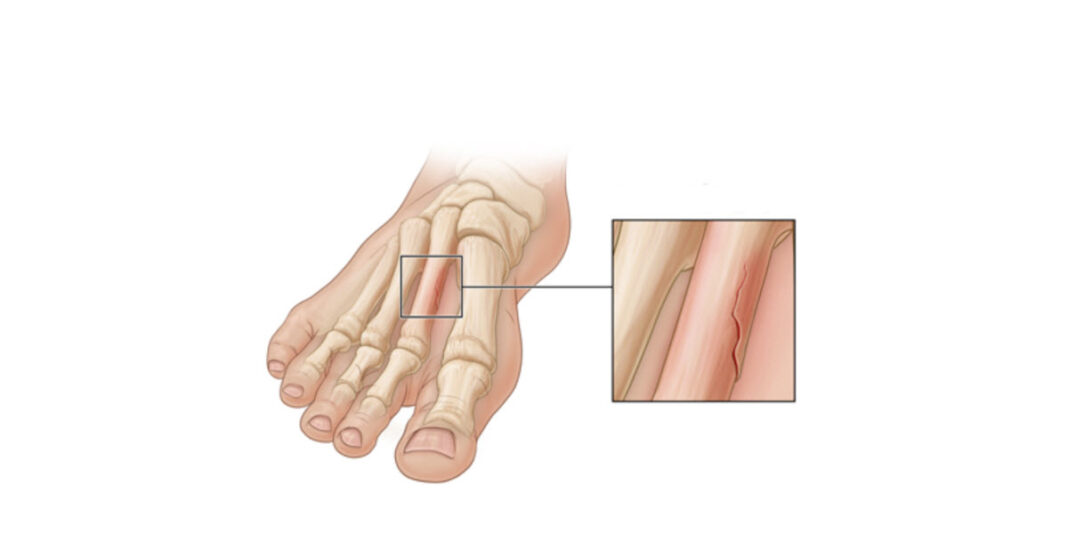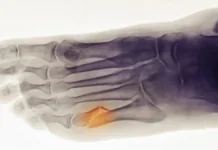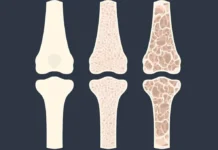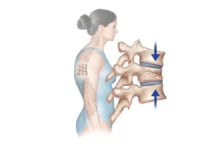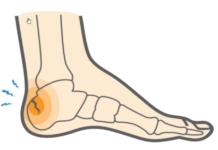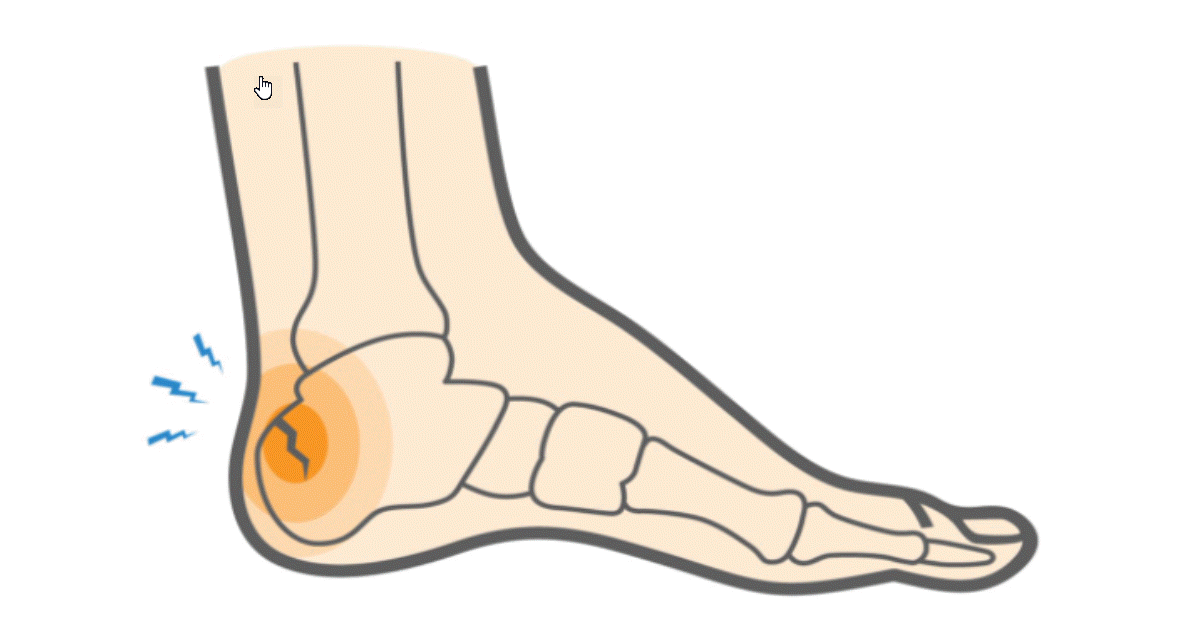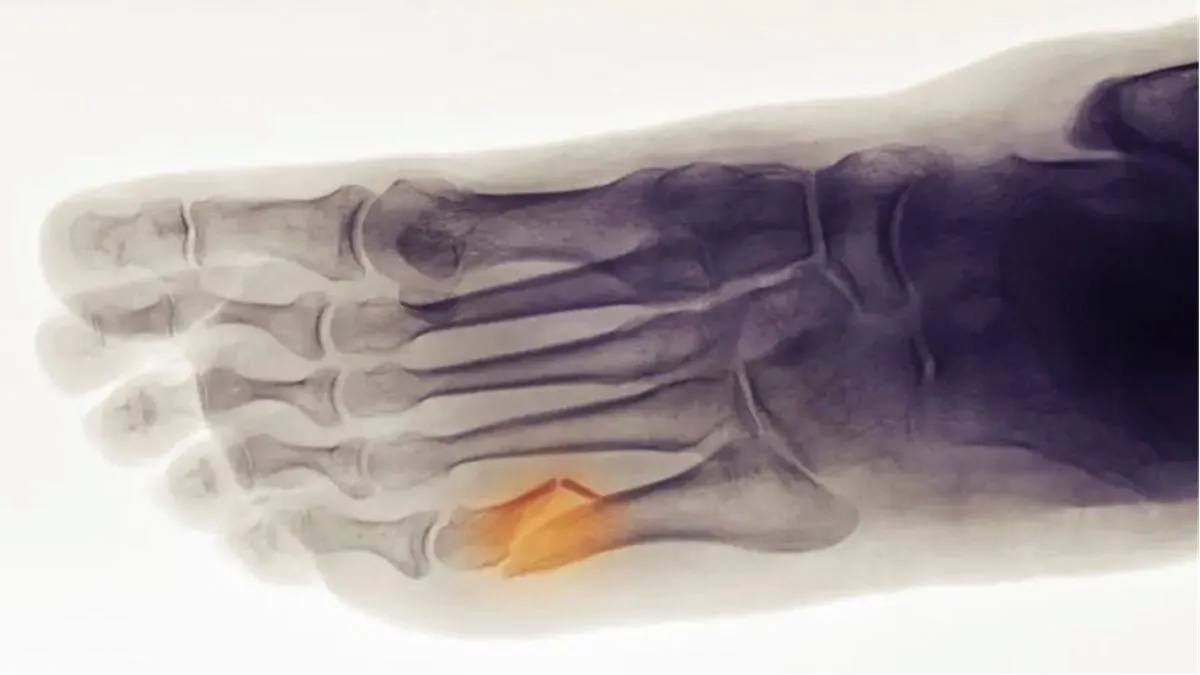Introduction to Stress Fractures
Stress fractures are a common injury affecting athletes, active individuals, and even those engaging in repetitive physical activities without proper conditioning. They represent small cracks or severe bruising within a bone, typically resulting from overuse or repetitive forces applied over time. Unlike acute fractures caused by a single traumatic event, stress fractures develop gradually, often starting as a minor discomfort that escalates into a more significant problem if left unaddressed. This injury underscores the importance of understanding the balance between physical activity, bone health, and recovery.
At their core, stress fractures occur when the body’s natural ability to repair microdamage in bones is outpaced by the accumulation of that damage. Bones are dynamic structures that constantly remodel in response to stress. During weight-bearing activities such as running, jumping, or hiking, bones endure microscopic stresses, which are usually repaired during rest. However, when repetitive strain exceeds the body’s capacity to recover, these micro-injuries can coalesce into a stress fracture.
Who is at Risk?
Stress fractures can affect anyone, but they are especially prevalent among individuals who abruptly increase the intensity, frequency, or duration of their physical activity. Athletes, particularly runners, are among the most affected, as their activities involve repetitive impacts on hard surfaces. Military recruits undergoing rigorous training programs, commonly referred to as “boot camp fractures,” are another high-risk group.
Certain factors further elevate the risk of stress fractures. Women, especially those with conditions like amenorrhea or low bone density due to hormonal imbalances, may be more susceptible. Conditions such as osteoporosis, which weaken bone structure, or nutritional deficiencies, such as low calcium and vitamin D levels, are critical contributors. Improper footwear, poor biomechanics, or training on uneven or hard surfaces can exacerbate the problem.
Symptoms and Common Sites
The hallmark symptom of a stress fracture is localized pain that worsens with activity and subsides with rest. Over time, the pain may persist during everyday activities or even at rest if the condition is not addressed. Swelling and tenderness over the affected area may also be present.
Stress fractures commonly occur in weight-bearing bones of the lower extremities. The tibia (shinbone) is the most frequently affected bone, followed by the metatarsals in the foot, the femur (thighbone), and the pelvis. In some cases, upper extremity bones, such as the humerus, can also be affected, particularly in sports involving repetitive arm motions like baseball or gymnastics.
Importance of Early Recognition and Prevention
Understanding stress fractures is vital not only for effective treatment but also for prevention. Early diagnosis can prevent the injury from worsening, reducing recovery time and minimizing disruptions to physical activity. Prevention strategies include gradually increasing physical activity, ensuring proper nutrition, using appropriate footwear, and incorporating cross-training and rest days into exercise routines. For athletes, biomechanical evaluations and proper coaching can address alignment issues and faulty movement patterns that contribute to stress injuries.
This blog post aims to delve deeper into the causes, symptoms, and treatment options for stress fractures, offering practical advice for maintaining bone health and staying injury-free. Whether you are a seasoned athlete, a weekend warrior, or someone looking to start a fitness journey, understanding stress fractures can help you stay proactive in your pursuit of an active and healthy lifestyle.
The important thing is not to do it TOO FAST…

Important Warning: The information on this blog is for educational purposes only and not a substitute for professional medical advice. Do not attempt any maneuvers, exercises, or treatments described here without consulting a qualified healthcare professional. Improper application may lead to injury or complications. Always seek professional guidance for your specific health needs.
What Are Stress Fractures?
Stress fractures are small cracks or severe bruises within a bone caused by repetitive stress or overuse. They often develop gradually over time, rather than as a result of a single traumatic event. These micro-injuries typically occur when the bone’s natural ability to repair itself is overwhelmed by repeated strain, leading to the accumulation of damage.
Definition and Mechanism of Stress Fractures
At their core, stress fractures result from a mismatch between the mechanical load applied to a bone and its ability to withstand that load. Bones are living, dynamic tissues that constantly remodel themselves in response to the stresses placed upon them. During activities such as running, jumping, or hiking, bones experience microscopic damage. Normally, the body repairs this damage through a natural process called remodeling, which involves the removal of weakened bone tissue and the replacement of stronger new bone.
However, if repetitive strain is applied too frequently or without adequate recovery time, the remodeling process cannot keep up. This imbalance causes microcracks to accumulate, eventually leading to a stress fracture. Unlike a sudden, acute injury, stress fractures are the result of a gradual breakdown of bone integrity.
How They Differ from Acute Fractures
Stress fractures differ significantly from acute fractures, which occur due to a single traumatic event, such as a fall or collision. Here are some key differences:

While acute fractures are often visibly deformed or immediately incapacitating, stress fractures are subtler and may initially present as mild discomfort. If ignored, however, they can progress to more serious injuries that may require extended recovery times.
The Role of Repetitive Strain and Bone Remodeling
Repetitive activities, especially those involving high-impact movements, play a central role in the development of stress fractures. Running, jumping, or other weight-bearing exercises repeatedly stress the same areas of bone. Without sufficient recovery periods, the continuous strain exceeds the bone’s ability to repair itself effectively.
Bone remodeling is the body’s mechanism for adapting to increased physical demands. When a bone is subjected to stress, it strengthens itself over time by replacing old tissue with new, denser tissue. This process, however, takes time. If someone increases their activity intensity, duration, or frequency too quickly, the bone does not have the opportunity to remodel adequately. This delay leaves it vulnerable to microdamage, ultimately leading to a stress fracture.
Prevalence in specific populations
- Children and Adolescents:
- Children and adolescents may develop stress fractures due to participation in intensive sporting activities, particularly those involving repetitive movements or heavy loads.
- Activities such as gymnastics, dancing, soccer, and running can increase the risk of stress fractures in young people because of the pressure placed on growing bones.
- Elderly people:
- In older adults, bone density decreases with age, which may increase susceptibility to stress fractures.
- Stress fractures in older adults may result from a combination of factors, including inadequate physical activity, decreased muscle mass, and increased bone fragility.
- Pregnant women:
- Pregnant women may be prone to stress fractures due to hormonal changes, weight gain, and changes in posture during pregnancy.
- Bones and joints may experience increased stress due to fetal growth, which can contribute to the development of stress fractures.
- Female Athletes:
- Female athletes, particularly those participating in sports that place significant stress on the bones (such as running), may be at increased risk of stress fractures due to amenorrhea (absence of menstruation) associated with intense levels of physical activity.
- Elite Military and Athletes:
- Individuals involved in military activities or elite sports may be at high risk of stress fractures due to intensive training, heavy loads and constant physical stress.
- People with eating disorders:
- Individuals with eating disorders such as anorexia or bulimia may have reduced bone density due to inadequate nutrition. This can increase the risk of stress fractures.
- People with osteoporosis:
- People with osteoporosis, a condition characterized by decreased bone density, are more likely to suffer stress fractures, even during light activities, because of the fragility of their bones.
- Physically active workers:
- Some workers, such as military personnel, firefighters, police officers, and construction workers, are exposed to significant physical loads as part of their jobs. This can increase their risk of stress fractures, especially if they are subjected to physically demanding tasks repeatedly.
- Patients on specific drug treatment:
- Certain medications, such as long-term corticosteroids, can impact bone density and increase the risk of stress fractures.
- Professional dancers:
- Professional dancers, due to the repetitive movements and high physical demands of their art, may be more susceptible to developing stress fractures, particularly in the lower extremities.
- People practicing high impact sports:
- Participants in high-impact sports, such as basketball, tennis, and soccer, may be at increased risk due to the repetitive impact forces placed on the bones.
- People in remission from eating disorders:
- Even after overcoming eating disorders, individuals may retain reduced bone density, increasing the risk of stress fractures.
Symptoms and Diagnosis
Stress fractures can be insidious, often starting with subtle symptoms that worsen over time. Early recognition is crucial to prevent further injury and promote a full recovery. Below, we’ll explore the key signs, commonly affected areas, and the diagnostic process for stress fractures.
Key Signs to Watch For
The symptoms of a stress fracture are often progressive, beginning with mild discomfort and advancing to more significant pain if the injury remains unaddressed. Common symptoms include:
- Localized Pain:
- The pain is usually specific to the site of the fracture and worsens with activity.
- In the early stages, the pain may disappear during rest but can become persistent as the injury progresses.
- Swelling and Tenderness:
- Mild swelling may develop over the affected area.
- The skin above the fracture site may feel warm or tender to the touch.
- Pain During Weight-Bearing Activities:
- Activities like running, jumping, or even walking may become increasingly painful.
- In severe cases, pain may persist even during everyday movements or rest.
- Other Sensations:
- Some individuals report a dull ache or throbbing in the affected area.
- Weakness or stiffness around the injury site may also occur.
Commonly Affected Areas
Stress fractures typically occur in weight-bearing bones due to repetitive impact and strain. The most commonly affected sites include:
- Tibia (Shinbone):
- The tibia is the most frequently injured bone, especially among runners.
- Pain is often felt along the front or inside of the shin.
- Metatarsals (Foot Bones):
- The second and third metatarsals are particularly susceptible due to their role in bearing weight during walking or running.
- Pain may be localized on the top of the foot.
- Femur (Thighbone):
- Stress fractures in the femur are less common but can occur in the neck or shaft of the bone.
- Pain is typically felt deep in the thigh or groin area.
- Pelvis:
- Stress fractures in the pelvis often result from high-impact sports or prolonged physical activity.
- Pain is usually localized to the hip or groin.
- Other Areas:
- Less commonly, stress fractures can occur in the ribs, humerus (upper arm), or spine, particularly in athletes who engage in sports with repetitive upper-body movements like rowing or gymnastics.
How Stress Fractures Are Diagnosed
Diagnosing a stress fracture involves a combination of clinical evaluation and imaging studies. Early diagnosis is key to preventing further complications. The process typically includes:
- Clinical Examination:
- The healthcare professional will take a detailed history of the patient’s symptoms and recent activities.
- Physical examination may reveal localized tenderness, swelling, or pain during specific movements.
- Imaging Studies:
- X-rays: While often the first imaging method used, X-rays may not detect stress fractures in their early stages. They become more useful as the injury progresses and bone healing begins.
- MRI (Magnetic Resonance Imaging): An MRI is the most sensitive and specific imaging tool for diagnosing stress fractures. It can detect early bone stress reactions and soft tissue involvement.
- Bone Scans: These may be used if an MRI is unavailable. Bone scans show increased metabolic activity in the affected area, indicating a stress injury.
- CT Scans: Occasionally used for more detailed visualization of the bone structure if needed.
Pathophysiology
- Repetitive Stress: Stress fractures typically develop in response to repetitive stresses on a particular bone. These stresses may result from intense physical activities, repetitive movements, or excessive loading on a specific bone.
- Initial Microdamage: Repetitive stress initially creates microdamage in bone tissue. This microdamage is often too small to be detected by imaging tests such as X-rays.
- Bone Repair Failure: Normally, the body continually repairs microdamage to bone through a process called bone remodeling. However, in the case of stress fractures, the constant strain can exceed the body’s ability to repair.
- Accumulation of Microfractures: Over time, unresolved microdamage accumulates, forming microfractures. These microfractures can slowly progress and increase in size.
- Local Inflammation: Accumulation of microfractures can trigger a local inflammatory response in the affected area. Inflammation is the body’s attempt to repair the damage, but it can also contribute to pain and progression of microfractures.
- Complex Fracture Risk: If stress persists and repair mechanisms cannot keep up, microfractures can develop into a complete fracture. This fracture can occur across the microfracture zone or at an adjacent location.
- Clinical Symptoms: As a stress fracture progresses, symptoms such as pain, tenderness, swelling, and possible inability to bear weight may occur. These symptoms may vary in intensity depending on the severity of the stress fracture.
Causes
- High-impact activities: Athletes involved in high-impact activities, such as running, jumping, ballet, or ball sports, are more likely to develop stress fractures due to the repetitive stress on the bones.
- Sudden changes in activity: A rapid increase in the intensity, duration, or frequency of physical activity can overload bones and lead to stress fractures. This can happen, for example, when a person goes from a low activity level to an intense training program.
- Poor training technique: Poor training technique or errors in biomechanics can increase the load on certain bones, increasing the risk of stress fractures.
- Improper footwear: Poorly fitting or worn athletic shoes can alter the distribution of forces on the feet and legs, contributing to the development of stress fractures.
- Biomechanics disorders: Problems such as flat feet, overpronation or leg length discrepancy can change the way forces are absorbed by bones, increasing the risk of stress fractures.
- Low bone density: Osteoporosis or low bone density can make bones more vulnerable to stress fractures, especially in older people.
- Dietary restrictions: Nutritional deficiencies, particularly calcium and vitamin D, can weaken bones and increase the risk of stress fractures.
- Pre-existing medical conditions: Certain medical conditions, such as female athlete syndrome, which is often associated with eating disorders, may increase the risk of stress fractures.
Preventive measure
- Gradual Progression:
- Avoid drastic changes in the intensity, duration, or type of physical activity. Gradual progression allows bones to gradually adapt to increased stress levels.
- Suitable Shoes:
- Use appropriate footwear for your activity, providing good cushioning and adequate support. Consult a sports footwear specialist for advice on choosing footwear that is appropriate for your body shape and activity.
- Training Surface:
- Opt for softer workout surfaces when possible. Avoid hard, rigid surfaces, especially if you regularly engage in high-impact activities.
- Variety of Activities:
- Incorporate a variety of physical activities into your training program. This reduces stress on specific areas and promotes balanced development of muscular strength.
- Muscle strengthening:
- Strengthen the muscles surrounding areas at risk for stress fractures, focusing on the legs, hips, and core. A strong core provides better support for bones.
- Proper Warm-Up:
- Perform a proper warm-up before any physical activity, focusing on the muscles and joints involved. This improves flexibility and prepares the body for the activity ahead.
- Adequate Rest:
- Allow your body adequate recovery time between workouts. Adequate rest allows bones to regenerate and minimizes stress buildup.
- Balanced Nutrition:
- Make sure you eat a balanced diet rich in calcium, vitamin D and other nutrients essential for bone health.
- Monitoring Symptoms:
- Be alert for signs of fatigue, persistent pain, or changes in how you feel during or after exercise. Consult a healthcare professional if you experience any concerning symptoms.
- Regular Medical Monitoring:
- If you are particularly active or have a history of injuries, consult a healthcare professional regularly for medical monitoring and appropriate advice.
Risk groups
- High Level Athletes:
- Athletes who train intensively, especially in high-impact sports such as running, jumping or dancing, are at greater risk for stress fractures due to the constant repetition of movements.
- Military:
- Members of the armed forces, particularly those subjected to intensive training exercises and missions on hard surfaces, may be more vulnerable to stress fractures.
- Dancers and Gymnasts:
- Dancers and gymnasts experience significant forces on their lower limbs, which can increase the risk of stress fractures, particularly in the bones of the foot, ankle, and shin.
- Runners or Runners:
- Runners, especially those who train over long distances or on hard surfaces, have an increased risk of stress fractures, particularly in the tibia.
- People with Low Bone Density:
- Individuals with reduced bone density, such as people with osteoporosis, are more likely to experience stress fractures.
- Growing People:
- Adolescents experiencing rapid growth may be more vulnerable to stress fractures because their bones may have difficulty keeping up with their growth.
- People with Hormonal Disorders:
- Hormonal disorders, such as menstrual disorders in women, can affect bone density and increase the risk of stress fractures.
- People Starting Intensive Physical Activity:
- Those who suddenly begin intense physical activity without gradual progression are more likely to suffer stress fractures.
- Individuals with a History of Stress Fractures:
- People who have had stress fractures in the past have a higher risk of recurrence, especially if the underlying factors have not been addressed.
- People with Pre-existing Medical Conditions:
- Certain medical conditions, such as rheumatoid arthritis, can increase the risk of stress fractures.
Differentiation from other injuries
Stress fractures are distinguished from other bone and muscle injuries by several characteristics, including their cause, mechanism, symptoms, and treatment options. Here’s how stress fractures are differentiated from other common injuries:
Causes and Mechanisms
- Stress fractures: These usually result from repeated or excessive stress on a bone, rather than acute trauma. These stresses may be related to intense physical activity or repetitive movements.
- Acute fractures: These are often caused by a sudden, single trauma, such as a fall, car accident, or direct impact to the bone.
Symptoms
- Stress fractures: Symptoms develop gradually and may include mild pain at first, which becomes more intense with activity. Pain often lessens with rest.
- Acute fractures: Symptoms, such as severe pain, swelling, and bone deformity, are usually immediate after trauma.
Diagnostic
- Stress fractures: Diagnosis can be difficult because standard X-rays may not reveal initial injuries. More advanced imaging tests such as bone scan, MRI (magnetic resonance imaging), or computed tomography (CT) scan may be necessary.
- Acute fractures: Fractures are usually detected by standard X-rays, which show obvious breaks in the continuity of the bone.
Localisation
- Stress fractures: These often occur in areas subjected to repetitive stress, such as the tibia, foot, femoral neck, or metatarsal.
- Acute fractures: These can occur in any part of the body depending on the trauma, and their location depends on the point of impact.
Evolution and Treatment
- Stress Fractures: With adequate rest and proper management, stress fractures tend to heal without surgery. Return to activity should be gradual.
- Acute fractures: Treatment depends on the severity of the fracture. It may include immobilization using casts, splints, or surgery, depending on the nature of the injury.
Muscle tears and sprains
- Muscle tears and sprains usually involve damage to soft tissues rather than bone.
- Muscle tears are ruptures of muscle fibers, while sprains are stretches or tears of the ligaments that connect bones together.
In summary, the main distinction of stress fractures from other injuries is their gradual development related to repetitive stress rather than acute trauma. Early diagnosis, appropriate management, and adaptation of physical activity are essential for optimal recovery from stress fractures. If a person suspects a bone or muscle injury, it is crucial to consult a healthcare professional for an accurate diagnosis and an appropriate treatment plan.
Psychological factors that influence stress fracture
- Mental stress and bone fragility: Chronic mental stress can negatively impact bone health. The stress hormone cortisol can influence bone metabolism by promoting bone resorption (breakdown of bone). This can make bones more vulnerable to stress fractures.
- Stress Hormones and Bone Density: Prolonged stress can affect bone mineral density by altering hormonal balance. Hormones such as adrenaline and cortisol can influence the regulation of calcium in bones.
- Relationship between stress and posture: Mental stress can also affect posture and how a person uses their body. Poor posture can increase pressure on certain bones, which could contribute to stress fractures.
- Impact on the healing process: Mental stress can slow down the healing process by affecting blood circulation, the inflammatory response, and the body’s ability to regenerate. Slower recovery may be observed in people who are under constant stress.
- Stress-related behaviors: People under mental stress may engage in less healthy behaviors, such as excessive alcohol consumption, smoking, or unhealthy diet, which can also affect bone health.
- Stress Management for Prevention: Effective stress management can play a crucial role in preventing stress fractures. Stress management techniques, such as meditation, relaxation, and exercise, can help reduce the negative impact of stress on bone health.
Radiographic signs of stress fracture
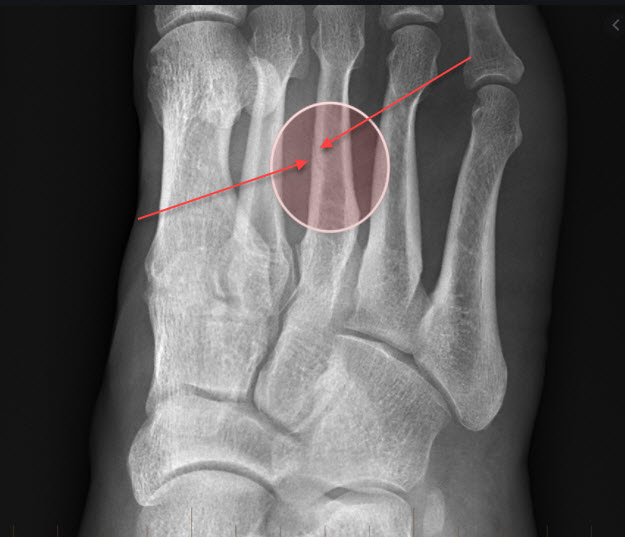
Stress fractures are often not visible on X-rays immediately after they occur because the initial bone changes may be subtle. However, as the fracture progresses, radiographic signs may become apparent. Some possible radiographic signs of stress fractures include:
- Fracture lines or calluses:
- In later stages, fracture lines or bone calluses may appear on X-rays. These signs indicate the body’s attempt to repair the fracture.
- Enlargement of the spinal canal:
- A stress fracture can cause a widening of the medullary canal (the cavity inside the bone) that can be seen on X-rays.
- Bone Sclerosis:
- Bone sclerosis, a thickening or hardening of the bone, may be seen around the fracture area on X-rays.
- Displacement of Adjacent Bones:
- In some cases, particularly with more severe stress fractures, displacement of adjacent bones may be visible on X-rays.
- Osteophyte Formation:
- Osteophytes, abnormal bony growths, may form near the fracture area in response to repeated stress.
- Cortical Enlargement:
- Cortical widening, an increase in bone thickness at the periphery, may be a radiographic sign of stress fractures.
- Perimetaphyseal reaction:
- A perimetaphyseal reaction, a response of the bone near the metaphysis, may be visible on radiographs.
Conclusion
Stress fractures are bone injuries resulting from repeated overload on a bone, usually due to intense physical activity or excessive repetition of movements. Although these fractures are often considered low-impact injuries, they can lead to complications if not properly diagnosed and treated. The key to managing stress fractures is early identification, adequate rest, and appropriate adjustments in physical activity.
In conclusion, it is imperative to pay close attention to warning signs such as persistent and localized pain, in order to prevent the development of stress fractures. A multidisciplinary approach, involving healthcare professionals such as physicians, physiotherapists and sports specialists, is essential for an accurate diagnosis and a treatment plan tailored to each individual. Modification of training habits, adequate rest and rehabilitation can play a crucial role in the recovery and prevention of stress fractures. It is always recommended to consult a healthcare professional for a complete assessment and personalized advice.
References
- Breithaupt MD On the pathology of the human foot. To the pathology of the human foot. Med Zeitung. 1855; 24 :169. [ Google Scholar ]
- Devas M.B. Stress fractures of the tibia in athletes of ‘shin soreness. J Bone Joint Surg Br. 1958;40(2):227–239. [PubMed] [Google Scholar]
- Schneiders A.G., Sullivan S.J., Hendrick P.A., Hones B.D.G.M., Mcmaster A.R., Sugden B.A. The ability of clinical tests to diagnose stress fractures: a systematic review and meta-analysis. J Orthop Sports Phys Ther. 2012;42(9):760–771. [PubMed] [Google Scholar]
- Fayad L.M., Kamel I.R., Kawamoto S., Bluemke D.A., Frassica F.J., Fishman E.K. Distinguishing stress fractures from pathologic fractures: a multimodality approach. Skelet Radiol. 2005;34(5):245–259. [PubMed] [Google Scholar]
- Niva M.H., Mattila V.M., Kiuru M.J., Pihlajamäki H.K. Bone stress injuries are common in female military trainees: a preliminary study. Clin Orthop Relat Res. 2009;467(11):2962–2969. [PMC free article] [PubMed] [Google Scholar]
Questionnaire (answer at the end)
1. What is the main cause of stress fractures?
a) Acute trauma
b) Repetitive strain
c) Poor training technique
d) Lack of calcium
e) All of the above
2. Where do stress fractures commonly occur?
a) Arm
b) Back
c) Foot bones
d) Skull
e) All of the above
3. What symptoms are associated with stress fractures?
a) Persistent pain
b) Swelling
c) Tenderness
d) Inability to bear weight
e) All of the above
4. Which groups are particularly at risk for stress fractures?
a) Children
b) Elderly
c) High-performance athletes
d) Pregnant women
e) All of the above
5. What is a recommended preventive measure?
a) Gradual progression
b) Proper footwear
c) Adequate rest
d) Balanced nutrition
e) All of the above
6. What imaging test is often needed to diagnose stress fractures?
a) X-ray
b) Bone scan
c) CT scan
d) MRI
e) All of the above
7. What psychological factor can influence stress fracture?
a) Chronic mental stress
b) Good posture
c) Balanced diet
d) Adequate sleep
e) All of the above
8. Which population group is more vulnerable to stress fractures due to rapid bone growth?
a) Elderly people
b) Adolescents
c) Pregnant women
d) Military personnel
e) All of the above
9. What is one possible radiographic sign of stress fractures?
a) Fracture lines
b) Cortical widening
c) Bone sclerosis
d) Osteophytes
e) All of the above
10. How important is stress management in preventing stress fractures?
a) Not important
b) May slow the healing process
c) Does not affect bone health
d) Essential for prevention
e) All of the above
11. What is the alternate term for a stress fracture?
a) Traumatic fracture
b) Acute bone injury
c) Fatigue fracture
d) Instantaneous fracture
e) All of the above
12. Which physical activity is associated with an increased risk of stress fractures?
a) Yoga
b) Swimming
c) Running
d) Slow walking
e) All of the above
13. What is the role of inflammation in the development of stress fractures?
a) Accelerate healing
b) Cause microdamage
c) Reduce pain
d) Does not affect stress fractures
e) All of the above
14. Which population group may be at increased risk due to hormonal disorders?
a) Adolescents
b) Adult men
c) Pregnant women
d) Elderly
e) All of the above
15. What is the consequence of an untreated stress fracture?
a) Spontaneous healing
b) Increased risk of complete fracture
c) Decreased sensitivity
d) Improved bone function
e) All of the above
16. What type of footwear is recommended to reduce the risk of stress fractures?
a) High-heeled shoes
b) Poorly fitting athletic shoes
c) Shoes appropriate for the activity
d) Slippers
e) All of the above
17. What is the effect of nutritional deficiencies on stress fractures?
a) Reduced risk
b) Strengthened bones
c) Increased risk
d) Does not affect stress fractures
e) All of the above
18. What is the best way to strengthen muscles to prevent stress fractures?
a) Sitting all day
b) Strengthening muscles
c) Avoiding all exercise
d) Eating sweets
e) All of the above
19. What medical condition may increase the risk of stress fractures?
a) Excessive hydration
b) Female athlete syndrome
c) Excessive sleep
d) All of the above
e) None of the above
20. How do stress fractures differ from acute fractures?
a) Repetitive causes
b) Acute traumatic causes
c) Immediate symptoms
d) No difference
e) All of the above
21. What type of physical activity is likely to contribute to the development of stress fractures in rapidly growing adolescents?
a) Swimming
b) Yoga
c) Running
d) Moderate walking
e) All of the above
22. What factor can make bones more vulnerable to stress fractures in older people ?
a) Increased muscle mass
b) Increasing bone density
c) Regular physical activity
d) Decreased bone density with age
e) All of the above
23. What is the risk for pregnant women regarding stress fractures?
a) Reduced risk due to pregnancy
b) Increased risk due to hormonal changes
c) No increased risk
d) Does not affect pregnant women
e) All of the above
24. How can mental stress affect bone health?
a) Strengthen bones
b) Negatively impact bone density
c) Does not affect bone health
d) Improve bone flexibility
e) All of the above
25. Which group of people may maintain reduced bone density even after overcoming eating disorders?
a) Children
b) Adolescents
c) Adults
d) Elderly
e) All of the above
26. What is the effect of the stress hormone cortisol on bone metabolism?
a) Accelerate bone healing
b) Promote bone growth
c) Promote bone resorption
d) Does not affect bone metabolism
e) All of the above
27. What type of physical training is recommended to reduce the risk of stress fractures?
a) Avoid all exercise
b) Intense training every day
c) Gradual progression of intensity
d) Exercise only on weekends
e) All of the above
28. What impact do high heels have on the risk of stress fractures?
a) Reduce risk
b) No impact
c) Increase risk
d) Does not affect stress fractures
e) All of the above
29. What is the possible consequence of poor training technique on bones?
a) Reduced risk of stress fractures
b) No impact
c) Increased risk of stress fractures
d) Does not affect bone health
e) All of the above
30. What is the effect of local inflammatory reaction on stress fracture symptoms?
a) Decrease pain
b) Worsen pain
c) No impact on pain
d) Does not affect symptoms
e) All of the above
Answers:
- b) Repetitive constraints
- c) Bones of the foot
- e) All of the above
- e) All of the above
- e) All of the above
- e) All of the above
- a) Chronic mental stress
- b) Adolescents
- e) All of the above
- d) Essential for prevention
- c) Fatigue fracture
- c) Running
- b) Cause microdamage
- c) Pregnant women
- b) Increased risk of complete fracture
- c) Shoes suitable for the activity
- c) Increased risk
- b) Muscle strengthening
- b) Female athlete syndrome
- a) Repetitive causes
- c) Running
- d) Decrease in bone density with age
- b) Increased risk due to hormonal changes
- b) Have a negative impact on bone density
- c) Adults
- c) Promote bone resorption
- c) Gradual progression of intensity
- c) Increase the risk
- c) Increased risk of stress fractures
- b) Worsen the pain

